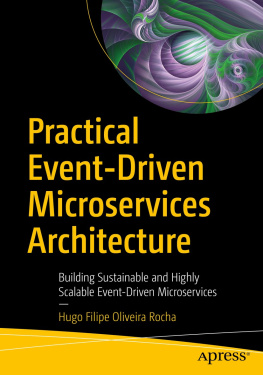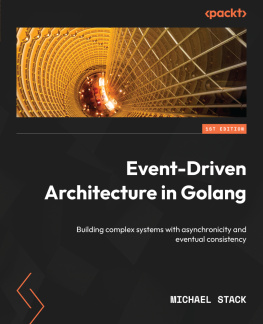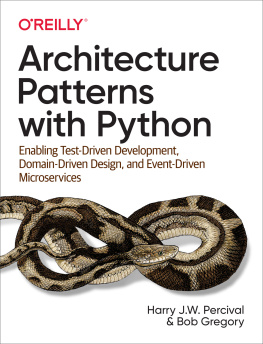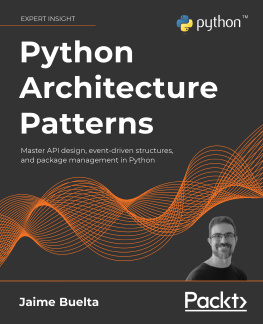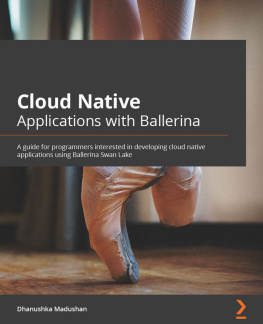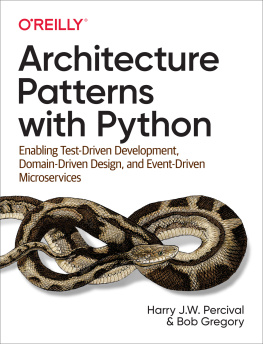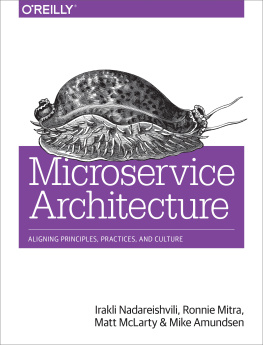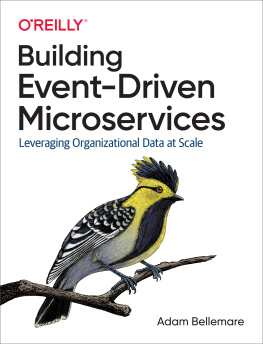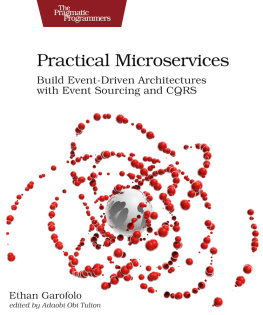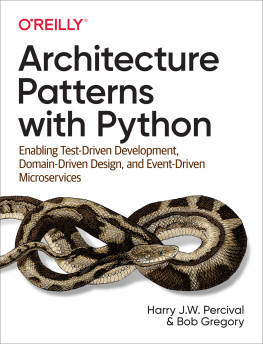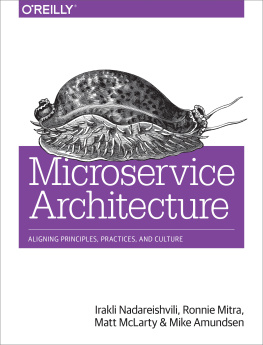Hugo Filipe Oliveira Rocha - Practical Event-Driven Microservices Architecture
Here you can read online Hugo Filipe Oliveira Rocha - Practical Event-Driven Microservices Architecture full text of the book (entire story) in english for free. Download pdf and epub, get meaning, cover and reviews about this ebook. year: 2022, publisher: Apress, genre: Computer. Description of the work, (preface) as well as reviews are available. Best literature library LitArk.com created for fans of good reading and offers a wide selection of genres:
Romance novel
Science fiction
Adventure
Detective
Science
History
Home and family
Prose
Art
Politics
Computer
Non-fiction
Religion
Business
Children
Humor
Choose a favorite category and find really read worthwhile books. Enjoy immersion in the world of imagination, feel the emotions of the characters or learn something new for yourself, make an fascinating discovery.
- Book:Practical Event-Driven Microservices Architecture
- Author:
- Publisher:Apress
- Genre:
- Year:2022
- Rating:5 / 5
- Favourites:Add to favourites
- Your mark:
- 100
- 1
- 2
- 3
- 4
- 5
Practical Event-Driven Microservices Architecture: summary, description and annotation
We offer to read an annotation, description, summary or preface (depends on what the author of the book "Practical Event-Driven Microservices Architecture" wrote himself). If you haven't found the necessary information about the book — write in the comments, we will try to find it.
Practical Event-Driven Microservices Architecture — read online for free the complete book (whole text) full work
Below is the text of the book, divided by pages. System saving the place of the last page read, allows you to conveniently read the book "Practical Event-Driven Microservices Architecture" online for free, without having to search again every time where you left off. Put a bookmark, and you can go to the page where you finished reading at any time.
Font size:
Interval:
Bookmark:
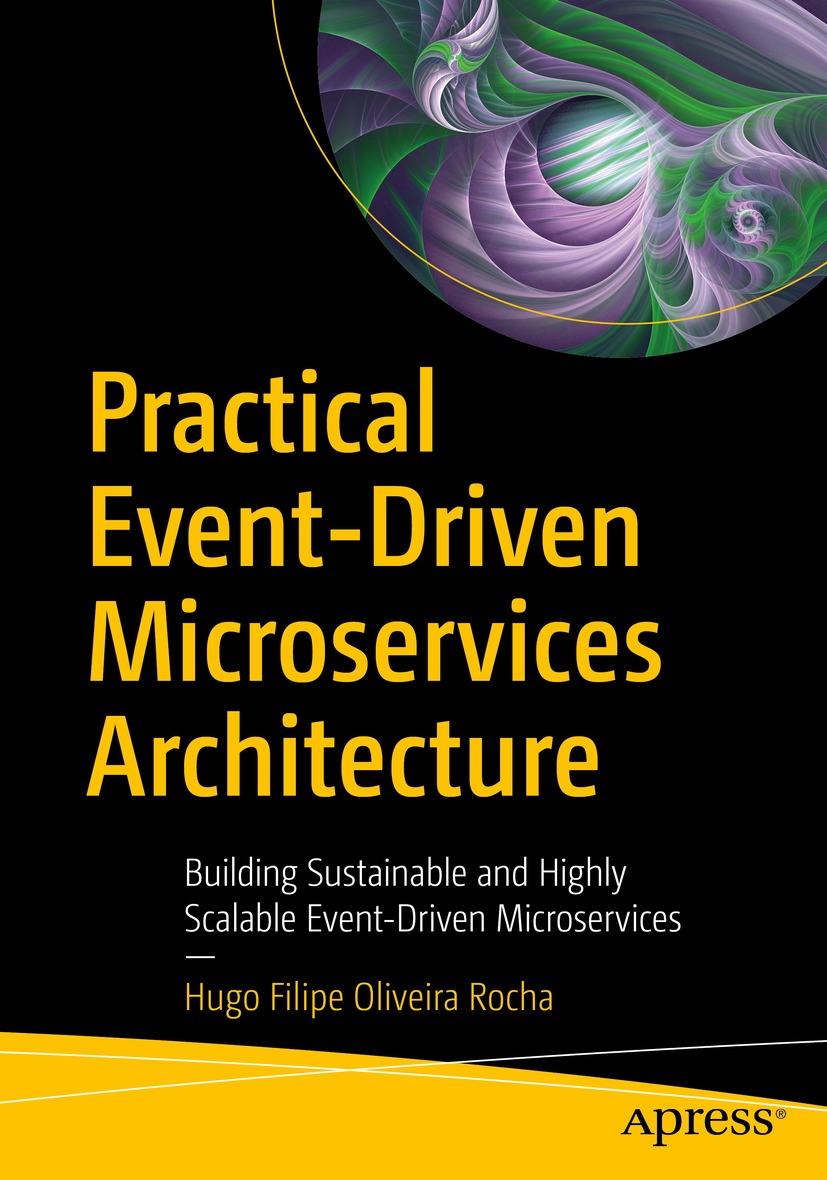

This Apress imprint is published by the registered company APress Media, LLC part of Springer Nature.
The registered company address is: 1 New York Plaza, New York, NY 10004, U.S.A.
As with all the best things in my life, this book included, started with a suggestion from my wife.
To the love of my life, Eduarda, and my dear daughter, Olvia.
Applications and systems came a long way since the traditional use cases of the turning of the century. You might recall measuring large data in a few gigabytes, waiting for a web page to load for a few dozens of seconds, or the scheduled maintenance that included a few hours of downtime. These were common practices perhaps 20 years ago; today, however, they are completely unacceptable. In fact, serving functionality in dozens of milliseconds and 100% uptime are properties users started getting used to and expect from any application. Achieving them at scale, however, requires a substantially different approach to how we build software and different paradigms to software architecture design. When dealing with data in several orders of magnitude larger than traditional applications, serving information in fractions of seconds globally and consistently with varying throughputs, and achieving higher availability by being resilient to most failure modes, is a fundamentally different challenge that traditional architectures werent made to solve.
Besides non-functional requirements like performance and scalability, time to market is paramount to the success of competitive businesses. The evolutionary nature of event-driven architectures paves the way for the technical infrastructure to react to changeable business needs. The success of recent tech companies proved that the close relation of the business and their tech solutions and the solutions inherent flexibility and adaptability are pivotal for the companys success. The technical decisions are as essential as the business strategy, and an inadequate strategy can become as disastrous as a bad business decision, being able to constrict business growth without the proper concerns and strategies in place.
In recent years, event-driven architectures arose as a powerful approach to software architecture design and as an answer to the difficult challenges applications face with increased usage, distributed data, and sharing data at scale. A notable characteristic of event-driven architectures is the focus on the event streams: it goes beyond applications simply reacting to events; event streams become the heart of data sharing throughout the company. Data no longer sits solely on a database and is accessible only through synchronous interfaces; instead, it is shared in event streams readily available for every current and future consumer. The event stream becomes a medium to share all relevant data occurring in real time and provides a way to understand how it changed in the past. It is also a powerful way to stream data to other services. Each consumer can plug into the stream and create a personalized view of the state. The highly decoupled nature provides more resilient properties than traditional architectures and flexibility to changing requirements. Data is readily available to new consumers in a scalable and decoupled way.
However, event-driven architectures arent without their downsides. Although single-process applications and monoliths have their limitations, walking into a distributed architecture is a whole different hell which companies are often not used to or ready for. An adoption without deliberate strategies to tackle its challenges and unawareness of its caveats can be a disastrous decision as other companies experienced in the past. Kelsey Hightower once said You havent mastered a tool until you understand when it should not be used. Its hard to achieve that level of realization without the experience of using something for long enough in production. This book proposes to shed light on when and where to use an event-driven architecture and how to fully reap its benefits. It proposes patterns and approaches to deal with its most difficult characteristics and how to incrementally and sustainably adopt an event-driven architecture.
Any source code or other supplementary material referenced by the author in this book is available to readers on GitHub via the books product page, located at www.apress.com/978-1-4842-7467-5. For more detailed information, please visit http://www.apress.com/source-code.
The monumental journey of transforming knowledge into a truly useful book requires an inconspicuous amount of people besides the sheer will of its author.
I want to thank everyone at Apress for making this book possible, especially Smriti Srivastava, Shrikant Vishwakarma, and Laura Berendson who were deeply involved in the books development. I also want to thank my technical reviewer, Daniel Gomes, for his thorough technical review and detailed suggestions.
I want to thank everyone at Farfetch for providing the real-world experience of many technical subjects, for enabling a trustful and open environment, for giving everyone the opportunity to tackle the difficult challenges of a highly distributed platform, being committed to their personal development and doing whats never been done. A special thanks to the members of my teams, for embracing every challenge that I throw at them easily and enthusiastically. And a very special thanks to Daniel Gomes and Ricardo Felgueiras for being committed to my personal development since the beginning, for inspiring me and challenging me to tackle new challenges, and for their honest and heartwarming camaraderie.
Font size:
Interval:
Bookmark:
Similar books «Practical Event-Driven Microservices Architecture»
Look at similar books to Practical Event-Driven Microservices Architecture. We have selected literature similar in name and meaning in the hope of providing readers with more options to find new, interesting, not yet read works.
Discussion, reviews of the book Practical Event-Driven Microservices Architecture and just readers' own opinions. Leave your comments, write what you think about the work, its meaning or the main characters. Specify what exactly you liked and what you didn't like, and why you think so.

